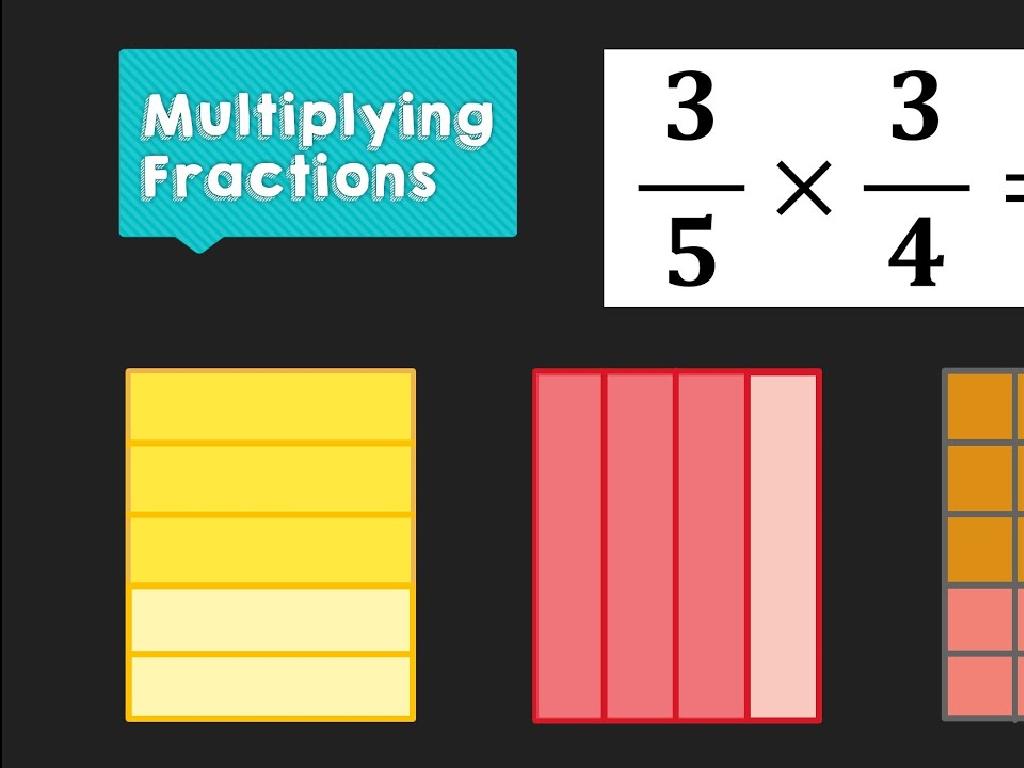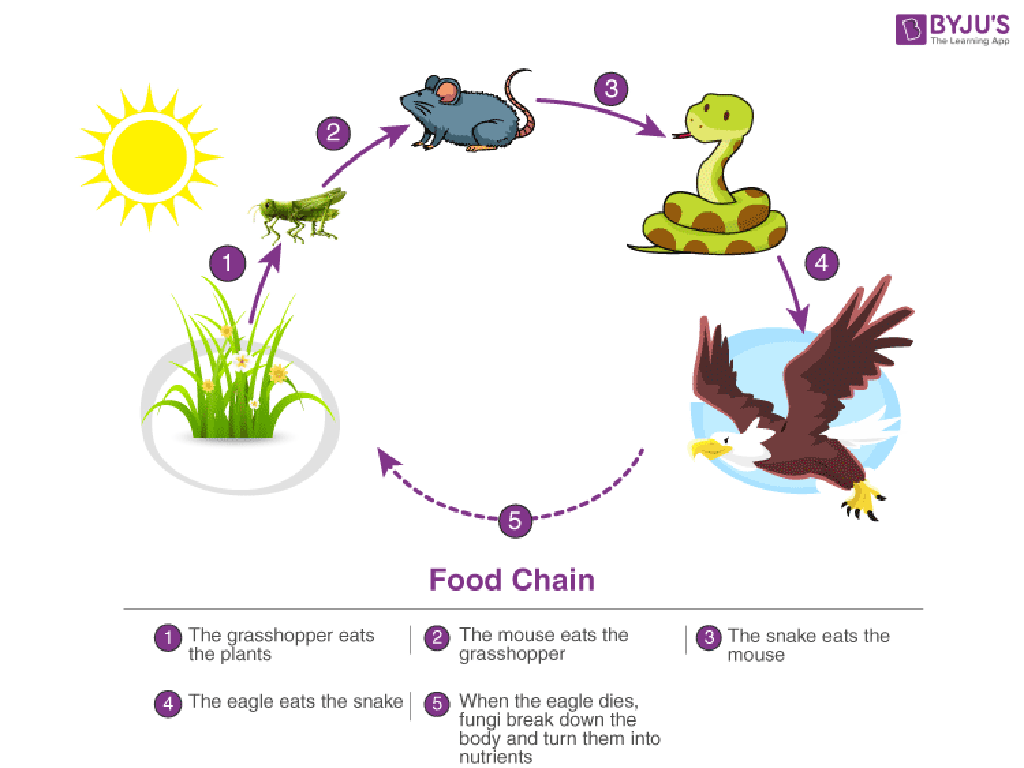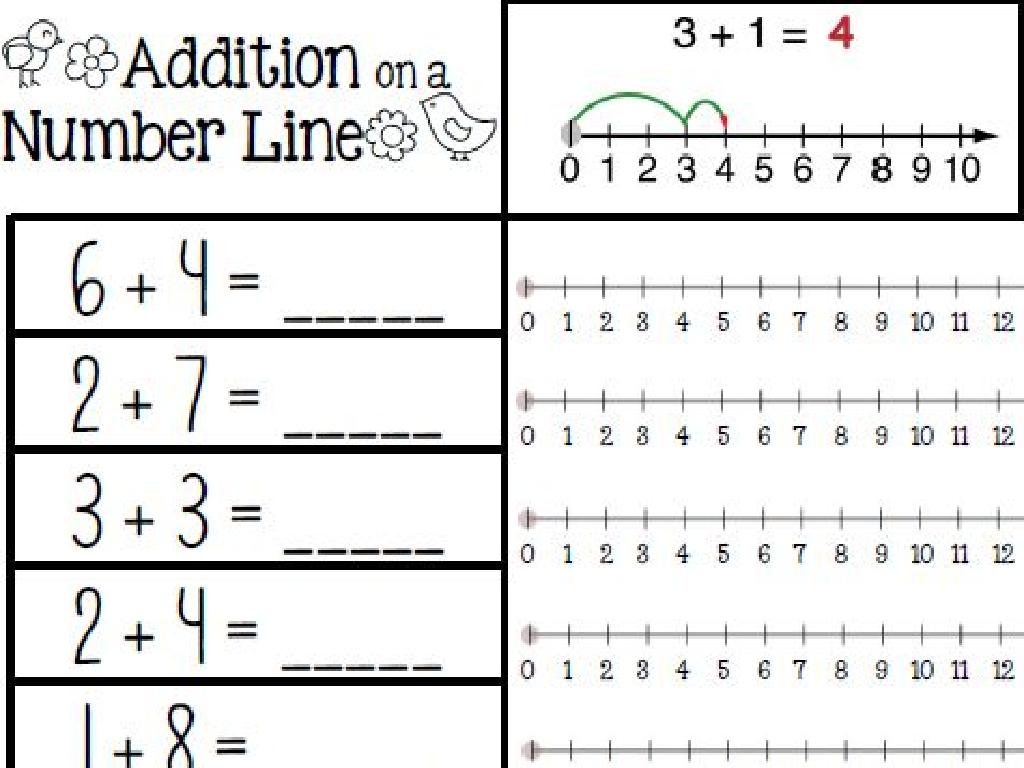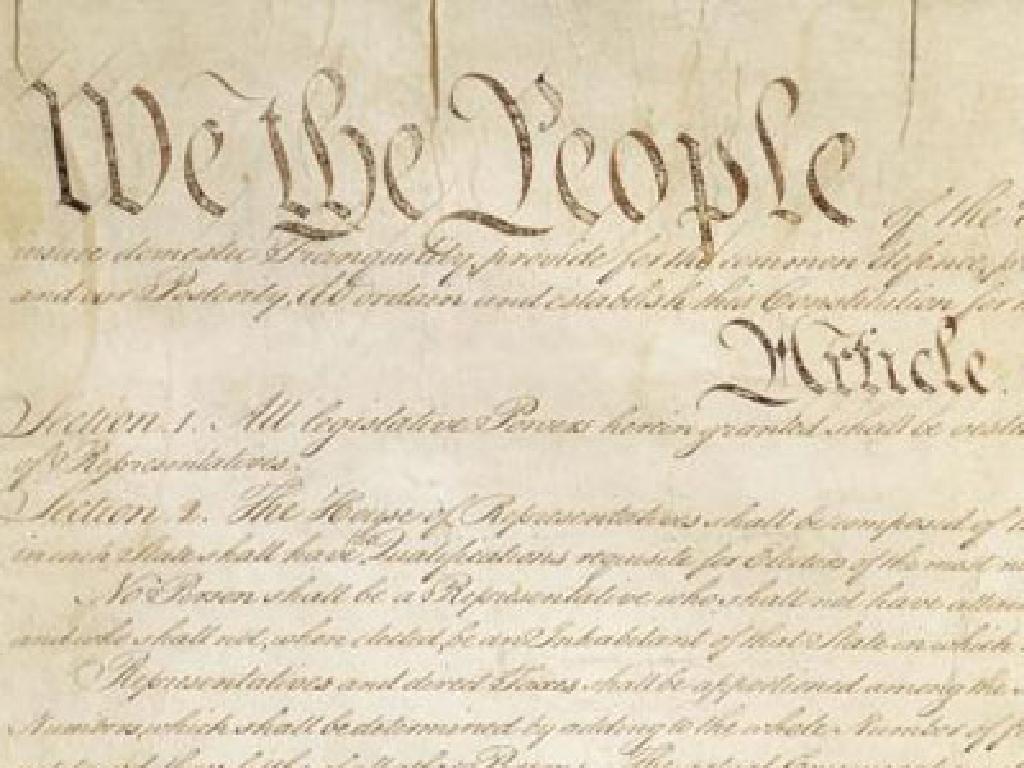Learn To Count - Up To 5
Subject: Math
Grade: Pre-k
Topic: Counting To 5
Please LOG IN to download the presentation. Access is available to registered users only.
View More Content
Welcome to Counting Up to 5!
– Greet our little mathematicians
– Today’s focus: Learning about numbers
– Counting fingers on one hand
– Look at one hand, count each finger out loud
– Understanding the number 5
– The total fingers on one hand equals 5
|
This slide is designed to introduce Pre-K students to the concept of counting up to the number 5. Start the lesson with a warm greeting to make the children feel comfortable and excited about learning math. Explain that numbers are all around us and today we will focus on understanding them better. Engage the students in a practical activity by asking them to count their fingers on one hand, which will naturally lead to the number 5. This exercise helps them relate to the concept of counting with something familiar. Encourage the children to count out loud together and praise them as they grasp the concept. The goal is to ensure they understand that the number of fingers on one hand represents the number 5, laying the foundation for counting skills.
What is Counting?
– Counting tells us ‘how many’
– Counting helps us figure out the total number of items in a group.
– We can count anything!
– Imagine counting your stuffed animals or blocks.
– Count toys, fingers, cookies
– For example, how many fingers are on one hand?
– Let’s count up to 5 together
– We’ll practice counting with fun examples!
|
This slide introduces the concept of counting to Pre-K students. Start by explaining that counting is a way to find out how many things there are in a group. Use relatable examples like toys, fingers, and cookies to make the concept tangible for the students. Engage them by counting objects in the classroom or items they brought from home. Encourage participation by asking them to count along with you. The goal is to make them comfortable with numbers up to 5 and to understand that counting is a useful and everyday skill.
Learning the Number 1
– This is the number 1
– Saying ‘one’ for a single item
– When we see only one thing, we use the word ‘one’ to describe it.
– Find one toy activity
– Look around and pick any toy, just one!
– Understanding ‘one’ as a quantity
– ‘One’ means not more or less, but exactly one.
|
This slide introduces the concept of the number one to Pre-K students. Start by showing them the numeral ‘1’ and explaining that it represents a single item. Use concrete examples like one apple or one block to illustrate the concept. For the activity, ask the students to find one toy in the classroom, which will help them associate the number with a physical quantity. Emphasize the idea that ‘one’ means only one item, not two or more, and not zero. This activity will help students begin to understand counting and quantity in a tangible way.
Learning the Number 2
– Understanding the number 2
– It’s one more than 1 and one less than 3
– ‘Two’ means a pair of items
– Like two eyes, two hands, or two apples
– Let’s count two claps
– Clap your hands twice and say ‘one, two’
|
This slide introduces the concept of the number 2 to Pre-K students. Start by showing them the numeral ‘2’ and explaining that it represents the quantity of two items. Use tangible examples like two eyes or two apples to illustrate the concept. Engage the students in a physical activity by counting out two claps together. This helps them associate the number with an action and reinforces their understanding through auditory and kinesthetic learning. Encourage the children to find pairs of things in the classroom or at home to further solidify the concept. The goal is to make them comfortable with recognizing and counting to the number 2 in a fun and interactive way.
Learning the Number 3
– This is the number 3
– Saying ‘three’ for three items
– Like 3 apples, 3 cars, or 3 blocks
– Show me three fingers
– Hold up 3 fingers on one hand
– Counting 1, 2, 3 together
– Practice counting with objects or pictures
|
This slide introduces the concept of the number 3 to Pre-K students. Start by showing them the numeral 3 and explaining that it represents the quantity of three items. Use real-life examples like 3 apples or 3 toys to illustrate the concept. Encourage the children to show three fingers, which helps them associate the number with a physical action. Engage the class by counting to three together using objects or images to reinforce the concept. Make sure to praise their efforts and correct gently if they make a mistake. The goal is to make them comfortable with recognizing and counting to the number 3.
Learning the Number 4
– This is the number 4
– Saying ‘four’ for four items
– When you see 4 apples, you have ‘four’ apples
– Find and count four blocks
– Let’s pick 4 blocks and count: 1, 2, 3, 4
– Understanding ‘four’ as a quantity
– Four means not 3, not 5, but one less than 5
|
This slide introduces the concept of the number 4 to Pre-K students. Start by showing them the numeral 4 and explaining that it represents the quantity of four items. Use concrete examples like four apples or four toys to illustrate the concept. Engage the students in a hands-on activity where they find and count out four blocks, reinforcing the number’s value. Emphasize the idea that four is one more than three and one less than five to help them understand its position in the sequence of numbers. Encourage the children to practice counting to four with various objects to solidify their understanding.
Learning the Number 5
– This is the number 5
– Saying ‘five’ for five things
– Like five fingers on a hand
– Counting five jumps together
– Let’s jump and count: 1, 2, 3, 4, 5!
– Practice counting to 5
– Use objects to count up to five
|
Introduce the number 5 to the students by showing them the numeral and saying it out loud. Explain that when there are five objects, we use the word ‘five’ to describe the quantity. Engage the students in a physical activity by counting out loud five jumps together to reinforce the concept. Encourage them to practice counting to five using real-life objects such as toys, fruits, or even their fingers to solidify their understanding of the number. The goal is to make the learning experience interactive and fun, ensuring the children can recognize and count to the number five confidently.
Let’s Count Together!
– Counting from 1 to 5
– Ready? Let’s start!
– 1, 2, 3, 4, 5!
– Practice saying the numbers in order
– Great job counting!
|
This slide is designed to engage Pre-K students in a simple counting activity. Start by getting the students’ attention and ensuring they are ready to count. Lead the counting slowly from 1 to 5, encouraging the students to join in and count aloud with you. After reaching 5, praise the students for their effort and participation. This activity helps to reinforce number recognition and the concept of counting in sequence. It’s important to maintain a positive and encouraging atmosphere to build the students’ confidence in their counting skills. For students who struggle, consider using visual aids like fingers or counting objects to help them associate the numbers with physical quantities.
Fun Counting Game with Colorful Balls
– Let’s play a counting game!
– We’ll count colorful balls together
– Look at the balls: red, blue, green, yellow, purple
– Everyone gets a turn to count
– Can we count all the way to 5?
– After counting, we’ll say the numbers together
|
This slide introduces a hands-on counting activity for Pre-K students, designed to teach them to count up to 5 using a tactile and visual approach. Provide a set of colorful balls, ensuring there are at least 5 of different colors. Encourage each child to take a turn to count the balls out loud, one by one, to reinforce number recognition and sequencing. As they count, the rest of the class can observe and then repeat the numbers together, promoting group learning. Possible variations of the activity could include asking children to pass the balls in a circle as they count, to find balls of a specific color and count them, or to add and remove balls from a group to practice counting up and down.
Review and Goodbye: Counting to 5
– Review numbers 1 to 5
– Count to 5 together
– Let’s count: 1, 2, 3, 4, 5!
– Praise for today’s counting
– Great job learning to count!
– Say goodbye until next time
|
This slide is meant to wrap up the session by reviewing the numbers from 1 to 5. Encourage the children to count out loud together to reinforce their learning. Offer praise to acknowledge their effort and progress in today’s lesson. This positive reinforcement helps build their confidence and excitement for learning. End the class on a cheerful note, letting them know you look forward to seeing them again. For the next class, consider preparing counting activities that involve physical movement or songs to further engage the children in learning numbers.






